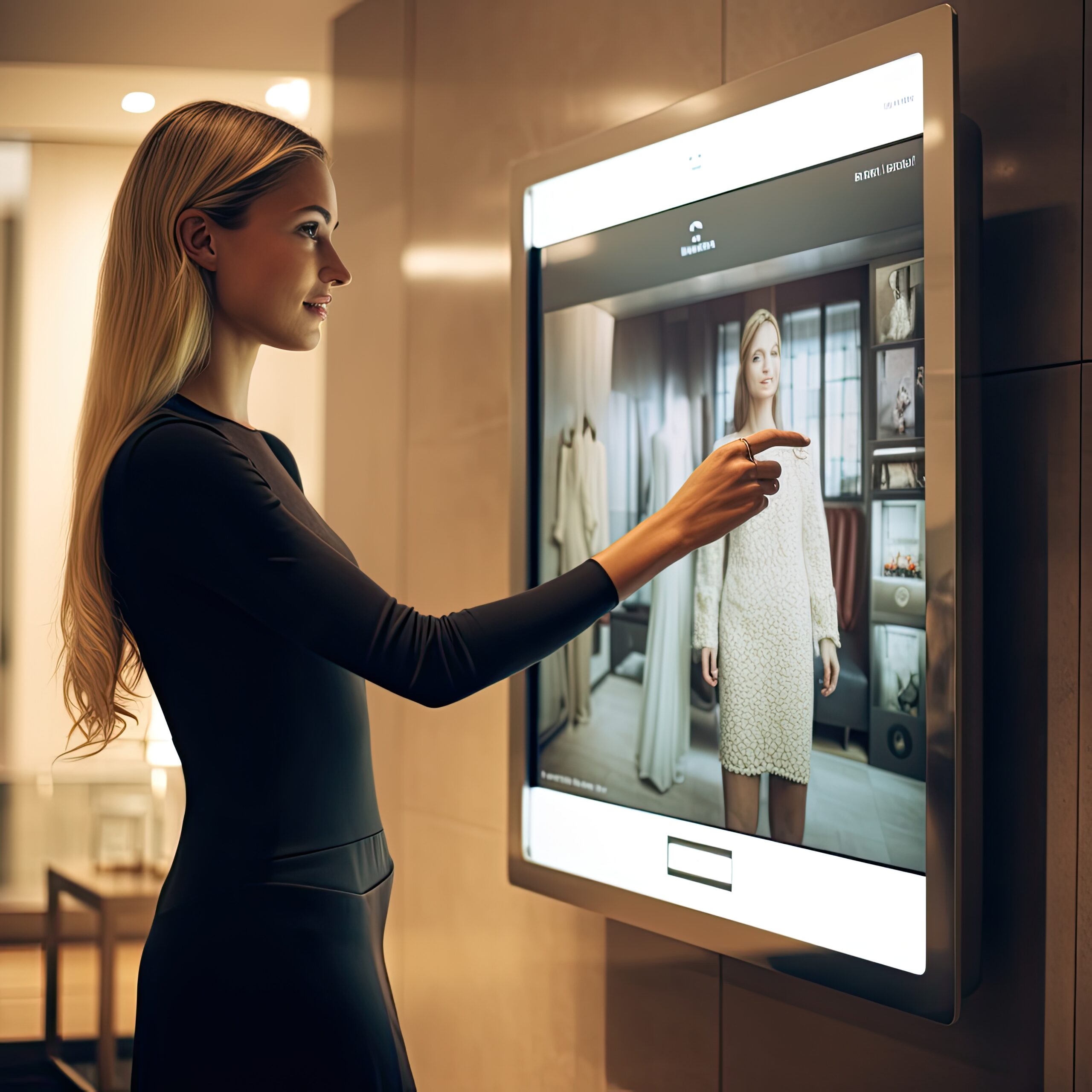
How Virtual Fitting Rooms are Revolutionizing Personalization in Online Fashion Retail
Introduction
The rise of online shopping has made it easier for consumers to purchase fashion items without setting foot in a physical store. However, one major challenge remains: how can shoppers visualize how clothes will fit and look on their bodies? This uncertainty often leads to abandoned carts, high return rates, and poor customer satisfaction. Virtual fitting rooms are addressing this issue by enhancing the personalization of the online shopping experience. They allow shoppers to virtually try on clothes, helping them make better-informed purchase decisions. This technology uses augmented reality (AR) and artificial intelligence (AI) to create customized, interactive experiences, providing a seamless and engaging alternative to traditional online shopping. Virtual fitting rooms are not just a trend—they are a game-changer in how fashion retailers connect with their customers.
What Are Virtual Fitting Rooms?
Virtual fitting rooms are digital tools that enable shoppers to try on clothing online using their computer or mobile device. These fitting rooms use augmented reality (AR) and artificial intelligence (AI) to create lifelike simulations of how clothes will fit and look on a shopper’s body. Customers can either upload a photo, input their measurements, or use the camera on their device to scan themselves. Virtual avatars or 3D models are then created to represent the shopper’s body shape and size. By virtually trying on clothing, customers can see how items fit them in real time, making online shopping more interactive and personalized.
How Virtual Fitting Rooms Improve Personalization in Fashion Retail
Virtual fitting rooms take personalization to the next level by allowing customers to see how clothes will fit their unique body shape, size, and style preferences. Instead of relying on standard size charts or images of models, virtual fitting rooms provide a more accurate and individualized experience. Shoppers can adjust clothing to see different fits, visualize the clothing on their digital avatar, and even get personalized clothing recommendations based on their shopping behavior or preferences. This tailored shopping experience helps customers make more confident purchase decisions and reduces the likelihood of returns due to poor fit.
Benefits of Virtual Fitting Rooms for Online Fashion Retailers
-
Increased Conversion Rates: Virtual fitting rooms allow customers to see how clothes will look on them before purchasing, increasing their likelihood of buying.
-
Reduced Return Rates: By helping shoppers find the right fit, virtual fitting rooms minimize returns due to sizing or fit issues.
-
Improved Customer Satisfaction: Shoppers appreciate the personalized experience and are more likely to have a positive view of the brand.
-
Enhanced Brand Loyalty: Offering a unique and convenient shopping experience through virtual fitting rooms strengthens customer loyalty and encourages repeat business.
Real-Life Examples of Virtual Fitting Rooms in Fashion Retail
Several brands have already integrated virtual fitting rooms into their online shopping experiences, achieving notable success:
-
ASOS: ASOS has introduced a virtual try-on feature where customers can visualize clothing on their body type using AR technology.
-
Zara: Zara allows customers to create personalized avatars and virtually try on clothes, enhancing the overall online shopping experience.
-
Nike: Nike’s “Nike Fit” feature uses AI to scan a customer’s feet and recommend the best shoe size, improving the footwear shopping experience.
These brands have seen positive impacts on customer engagement, sales, and satisfaction, showcasing the power of virtual fitting rooms in modern fashion retail.
The Future of Virtual Fitting Rooms in Fashion Retail
As virtual fitting room technology continues to evolve, fashion retailers can expect more immersive and seamless experiences for their customers. Advancements in AR and AI will make these tools even more accurate, allowing shoppers to virtually try on clothes with greater precision. Future trends may include more detailed body scans, personalized style recommendations, and even integration with social media for sharing virtual try-ons with friends and family. As these technologies become more accessible, virtual fitting rooms will become an essential part of the online shopping experience, allowing retailers to stay competitive and meet the growing demand for personalized shopping.
Why Fashion Retailers Should Adopt Virtual Fitting Rooms
In a highly competitive online marketplace, virtual fitting rooms offer fashion retailers a way to stand out. By providing a more personalized shopping experience, virtual fitting rooms not only improve customer satisfaction but also drive higher conversion rates and reduce return rates. They enhance the overall shopping experience and build stronger customer relationships. For online fashion retailers looking to stay ahead of the curve, adopting virtual fitting room technology is an essential step toward creating a more engaging and personalized shopping experience.
See Also: Virtual Fitting Rooms: The Future of Online Shopping
Conclusion
Virtual fitting rooms are transforming online fashion retail by providing a more personalized, immersive shopping experience for customers. These digital tools help shoppers visualize how clothes will fit, making the online shopping process easier, more enjoyable, and less prone to returns. As virtual fitting room technology continues to improve, fashion retailers can expect to see increased customer satisfaction, loyalty, and conversion rates. If you’re an online fashion retailer, embracing this technology will allow you to offer a better shopping experience and keep your brand competitive in the ever-evolving digital landscape.